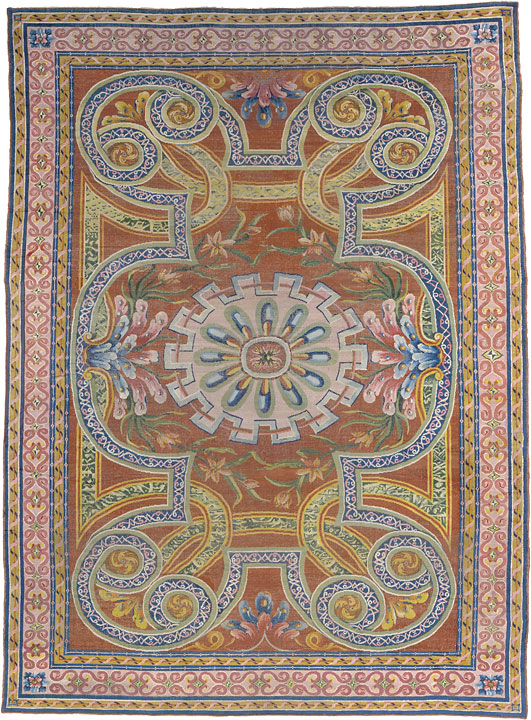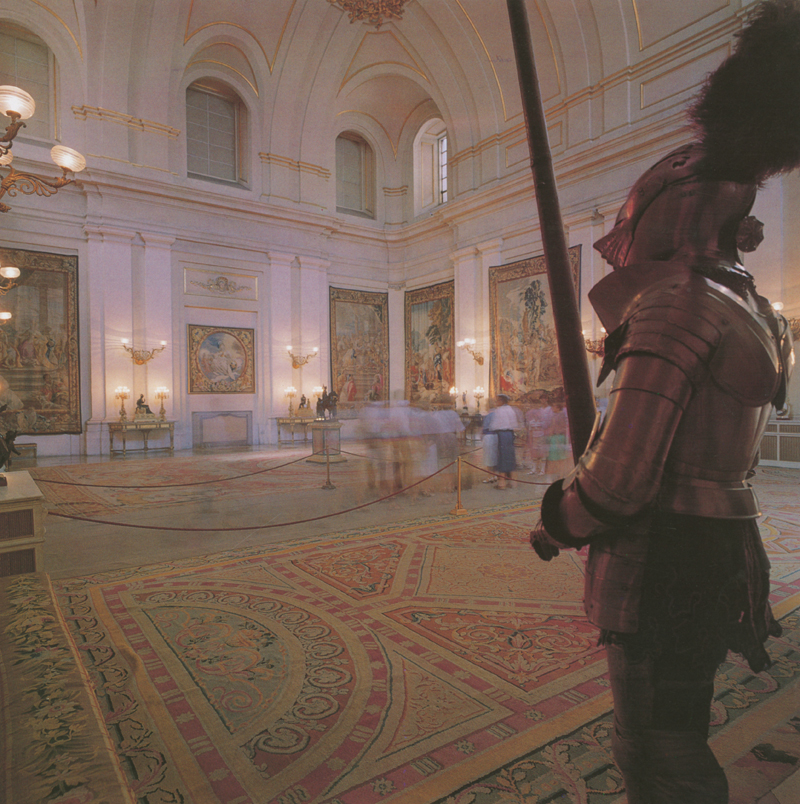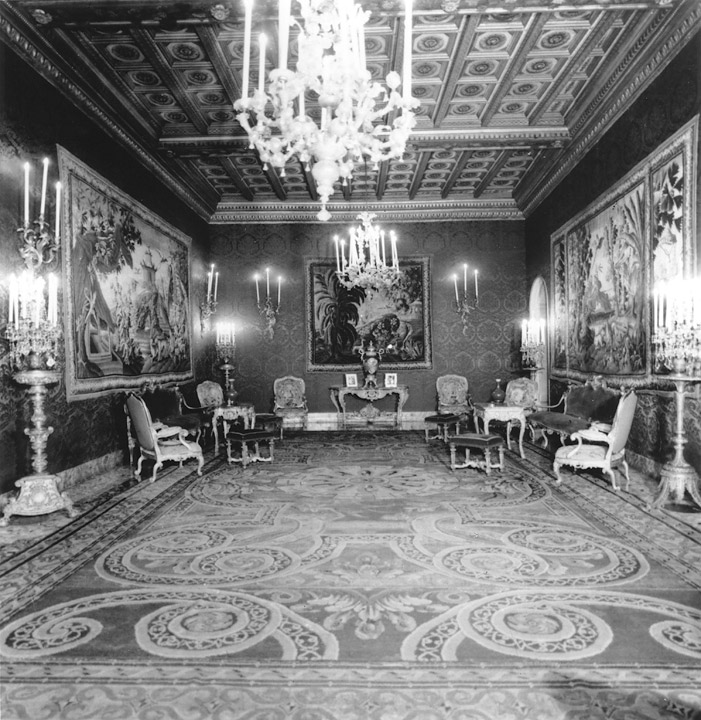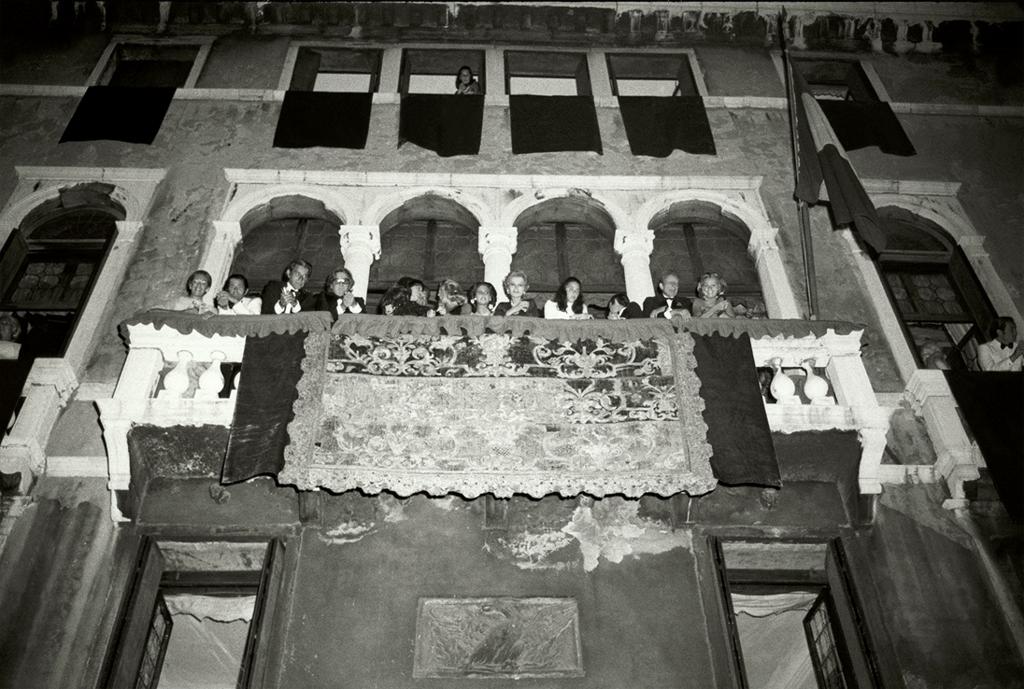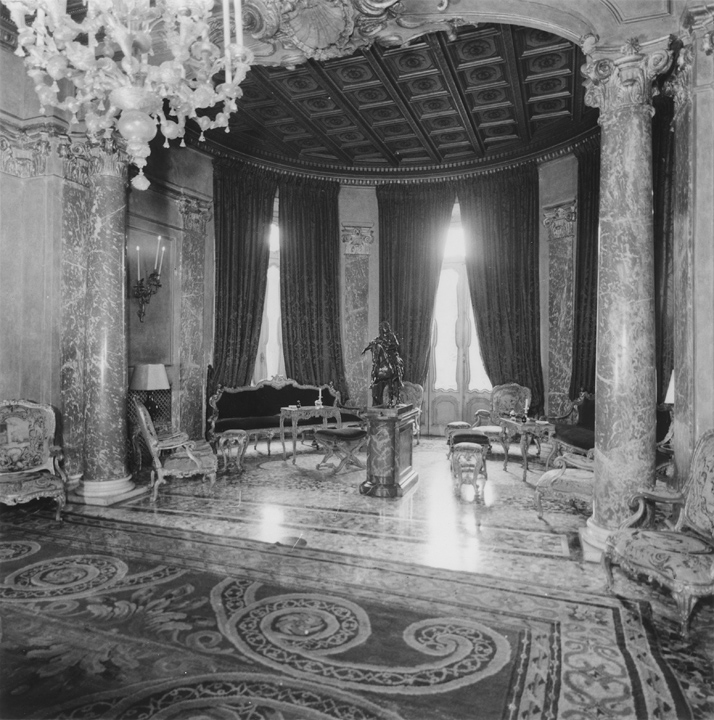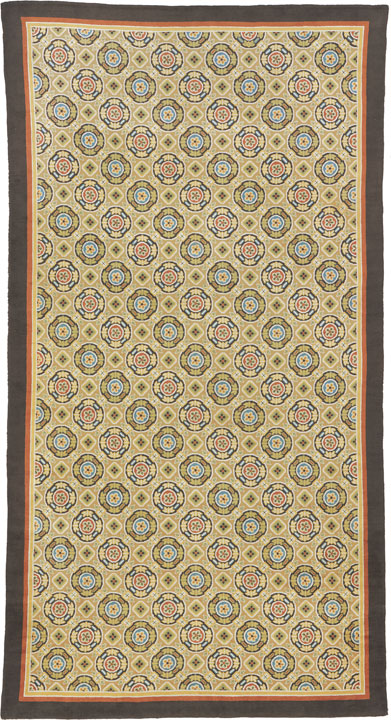October 31, 2016
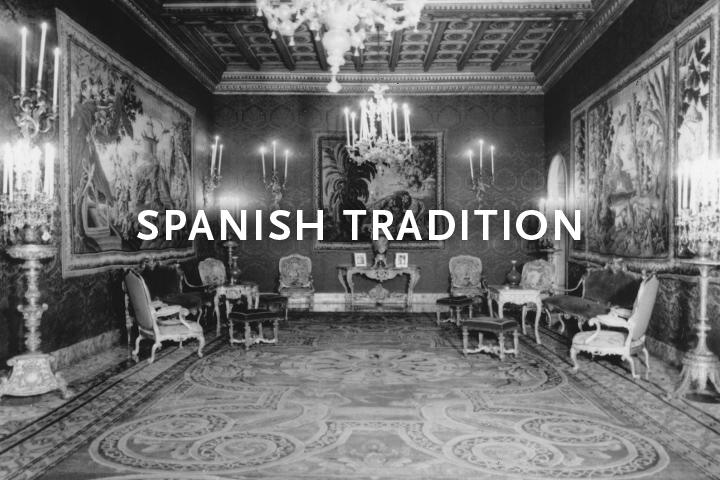
This beautiful 18th century carpet was made at the Royal Textile Factory of Cuenca and is a product of Spain’s illustrious carpet making tradition, the oldest in Europe. Carpets from the Castilian town of Cuenca have been circulating throughout the European and Eastern worlds for centuries.[1]
The Iberian Peninsula was part of the Islamic world from 711 to 1492, and a sophisticated culture of art and science radiated from the Islamic courts of al-Andalus.[2] In 1154, Arab cartographer Muhammad ibn Muhammad al-Idrisi wrote about seeing fine carpet weaving in Cuenca, and the 12th century Fatimid rulers of Egypt received Andalusian carpets as gifts.[3] Pope John XXII (r. 1315–1334) took Spanish carpets with him to the Palaces of the Pope in Avignon, to decorate his apartment there. In the 13th Century, Eleanor of Castile brought hundreds of carpets with her to England when she married Edward, heir to the throne.[4]
Royal Palace, Madrid.We know from European paintings that Spanish carpets were draped out of windows during royal processions, laid on tables, or set near a person in order to indicate nobility or high rank. By the 18th Century, the European nobility and royal courts had developed a seemingly insatiable appetite for these carpets, with the Spanish nobility in particular known for their enormous expenditures on decorative textiles.[5]
This Spanish carpet once graced a reception room in one of Rome’s most beautiful 17th-Century palaces, the Palazzo Volpi, designed by Alessandro Specchi, who is most renowned for his design of Rome’s famous Spanish Steps. The palazzo was occupied in the 20th Century by Count Giuseppe Volpi di Misurata, an important cultural figure who was both president of the Venice Biennale and, in 1932, founder of the Venice International Film Festival. The palazzo served as the backdrop for the annual Volpi balls: glittering parties where high society mingled with the international jet set. Guests included Cole Porter, Jean Cocteau, Winston Churchill, the Duke and Duchess of Windsor, Cecil Beaton, Elsa Maxwell, Orson Welles, and Maria Callas.
Jack Nisberg for Vogue, ca. 1973. Guests on the tapestry-hung balcony of the Palazzo Volpi, during a ball given by Conte Giovanni Volpi di Misurata for the 18th birthday of his niece, Donna Olimpia AldobrandiniIn 1951, when the Countess Volpi redecorated, she created a design scheme that anticipated 21st-Century taste; in the grand rooms she elegantly mixed periods and styles, so that this 18th century carpet might have appeared next to a sculpture by Alberto Giacometti.
Eighteenth century Cuenca carpets are rare and much sought after, with most extant examples found in museums such as Madrid’s Museo Nacional de Artes Decorativas and private European collections.[6] Spanish Cuencas were also popular with the major American collectors of the early 20th century. A very similar carpet was once in the collection of Arthur Byne, the art historian and dealer who specialized in Spanish art, his clients including Henry Clay Frick, Isabella Stewart Gardner and William Randolph Hearst. He and the artworks like this that he championed were the catalysts for the Spanish revival of the early 20th Century. His carpet is now in the collection of the Baroness Thyssen-Bornemisza.[7]
Room-sized 18th-Century carpets, like the Volpi Cuenca, were made to be sensually enjoyed. The soft wool and intricate patterns allow the eye to travel and wander; patterns are not exercises in iconography but meant to delight with their richness and variety.[8] These carpets are so substantial and well-made that they can still be found in use, centuries after their original production.
In these carpets, traditional Spanish designs, with decorative schemes based on the patterns of Renaissance and Islamic silks, were combined with chinoiserie, neoclassical, and rococo elements and motifs. This imaginative style is particular to 18th-Century Spanish carpets; other European carpets that reflect the taste of the Bourbon dynasty are more far more confined and conventional.
One reason 18th-Century carpets gained such favor in the 20th Century is that they have the weight of this storied history combined with a playful and spontaneous expression. Reflecting the turn away from the ponderous and formal styles of the Renaissance and Baroque, the joyful naturalism of the 18th Century mimics a similar development in the early 20th Century, when the seriousness, heaviness and formality of the Victorian age was cast off in favor of decorative innovations, like the Spanish revival, which had a more casual character.
In this example, we see how the diverse influences in the centuries-old tradition of Spanish carpet production freed the designer to create a particularly bold and exuberant design. The heterogeneous elements of this carpet include the terracotta field dyed with an expensive alum red dye imported from Italy, centered with a crenellated roundel enclosing a rose moresque within a naturalistic tulip garland; the Islamic influence can be seen in the bold and elegant interlace strapwork with scrolling arabesques surrounding the central medallion and filling the field; the unusual ivory border is a hybrid of Renaissance-style pink S-scrolls and Chinese cloudband motifs reflecting the 18th-Century European taste for chinoiserie; the narrow yellow borders of a trompe-l’œil guilloche of a pink and blue-backed ribbon curving around a rod is unusual and drawn with particular mastery.
[4] King, Donald, and David Sylvester. The Eastern Carpet in the Western World. London: Arts Council of Great Britain, 1983. 11.
[5] Reher, David S. Town and Country in Pre-Industrial Spain: Cuenca, 1550-1870. Cambridge University Press, 1990.
[6] Cristina Partearroyo Lacaba, Alfombras españolas. Textil e indumentaria: materias, técnicas y evolución : 31 de marzo al 3 de abril de 2003, Facultad de Geografía e Historia de la U.C.M., 2003.
[7] Ibid.
[8] Grabar, Oleg. The Mediation of Ornament. Princeton University Press, 1992. 148.

